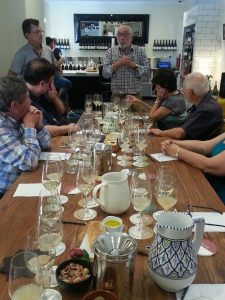
Last weekend Rob shared tank and barrel samples of our 2018 wines at an exclusive tasting event at the cellar bar. A fun and educational session ensued!
These young unfinished wines were presented along-side their counterparts currently being poured at the cellar bar. This gave us the opportunity to compare what they smell and taste like at this very early stage to when they are ready to be released (and more importantly, drunk!).
“But, why would I want to taste an unfinished wine?” I hear you ask?
Well, if you’re reading this blog, I’m guessing there is a fair chance you enjoy learning more about wine and the wine-making process. On the surface, wine-making may look as simple as getting some grape juice, adding some yeast and letting it do its thing. And that would probably work… if you’re not interested in making a good wine!
The key to making an exceptional wine is in the skill of the winemaker. Experts like Rob are able to look at these young wines and not only predict, but manage how they will develop. Even as far back as when the grapes are on the vine, Rob tastes the grapes and will assess the primary fruit characters of the juice. Now that fermentation has begun (and in some cases, finished), Rob is now looking at the developed fruit characters and figuring out how to enhance the ones he wants to show in the finished product.
It’s a delicate process… one which would be beyond many of us (or we’d all be excellent winemakers like Rob!), but it is fun to see if you can pick up some of those flavors that Rob so expertly identifies.
Primary fruit flavours and aromas come from the type of grape and/or the environment in which it grows. They are responsible for the distinctive aroma and flavour sensations of wines made from those grapes. Each variety of grape has its own set of varietal characters and its own pattern in which these change during ripening. This is referred to as the primary fruit spectrum. For example, Sauvignon Blanc can be described as herbaceous or grassy in the early stages of ripening, whereas later in the ripening stage the aromas and flavours more often resemble tropical fruit. This spectrum is specific to Sauvignon Blanc.
Developed fruit characters (or secondary flavours and aromas) are derived via the fermentation process. This process interacts with the primary fruit characters to produce more developed flavours and aromas such as: yeast, bread, creamy, caramel, nougat, truffle (to name just a few).
There are also tertiary characters which come from the aging process (in barrel and bottle). They can include: vanilla, coconut, dried fruit, coffee and chocolate (yum!).
So, what did they taste like?
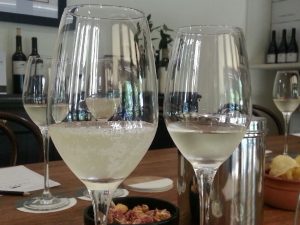 Sauvignon Blanc (ex-stainless steel tank): The aroma was at the tropical fruits end of the spectrum (think rockmelon and passionfruit). That’s because although the Adelaide Hills is classified as cool climate, Kim’s vineyard has an east facing aspect. The fruit takes on these attractive tropical flavours – rather than gooseberry, herbaceous notes. The young wine was still fizzy (see photo) as the ferment wasn’t complete at that stage, but not far off. This will be replaced with a crispness in the finished wine. As you can see, it was cloudy. Careful racking, fining and filtering will take care of that.
Sauvignon Blanc (ex-stainless steel tank): The aroma was at the tropical fruits end of the spectrum (think rockmelon and passionfruit). That’s because although the Adelaide Hills is classified as cool climate, Kim’s vineyard has an east facing aspect. The fruit takes on these attractive tropical flavours – rather than gooseberry, herbaceous notes. The young wine was still fizzy (see photo) as the ferment wasn’t complete at that stage, but not far off. This will be replaced with a crispness in the finished wine. As you can see, it was cloudy. Careful racking, fining and filtering will take care of that.
Fumé Blanc (ex-French oak barrels): While similar to the Sauvignon Blanc, it was already showing some textural difference due to the influence of the oak, There was also just a touch of oak aroma showing up already, even though it was barely a week in barrel then.
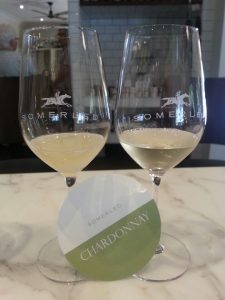 Chardonnay (ex-French oak barrels): Aromas of citrus (like grapefruit). It already exhibits its hallmark mouthfeel (think of that lovely creamy feeling you get with a good glass of chardy!) Its richness may be partly due to the bit of sugar which is still fermenting out. It’s certainly heading down the right track though.
Chardonnay (ex-French oak barrels): Aromas of citrus (like grapefruit). It already exhibits its hallmark mouthfeel (think of that lovely creamy feeling you get with a good glass of chardy!) Its richness may be partly due to the bit of sugar which is still fermenting out. It’s certainly heading down the right track though.
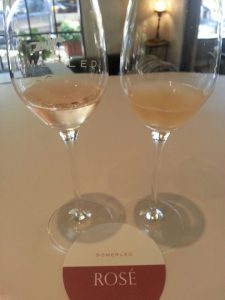 Rosé (ex-stainless steel tank): Looked like pink grapefruit juice, but had those lovely strawberry flavours we all love in this wine. It looked sweet compared with the 2017, but it will be quite dry by the time it gets to bottle.
Rosé (ex-stainless steel tank): Looked like pink grapefruit juice, but had those lovely strawberry flavours we all love in this wine. It looked sweet compared with the 2017, but it will be quite dry by the time it gets to bottle.
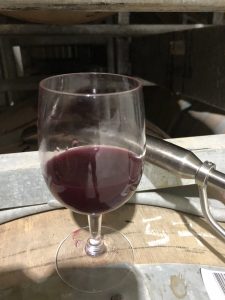
Pinot (ex-French Oak barrels): The colour of this wine in progress was intense (see picture). Nice deep dark crimson and a full body. Rob is very excited about this one! He particularly likes the clean perfumed and spiced aromas and already quite rich flavours. It’s big compared with the 2016 and 2017, but is already soft.
NOTE: the French oak barrels above have already been used for 2016, then 2017 wines. It will still impart some gentle spicy aromas and flavours without being too overpowering.
Missed out on the tasting last weekend?
Make sure you join our mailing list (if you’re not already on it) and check your emails for upcoming events… there will be plenty more throughout the year.
And I know I keep banging on about it, but there ARE some surprises in store for our interstate followers. Watch this space!
A quick update from the winery this week…
A very quiet week in the winery as we wait for the ferments to finish. They are all going well. The Sauvignon Blanc is pretty well there, so that will be racked in the coming week. The Chardonnay and Fumé very close. No malolactic bacteria has been added to these yet… not until the primary fermentation is completely finished.
Rob is really impressed with each of the wines confirming his thoughts that this is another EXCELLENT vintage!
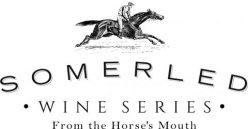
Great update, well done Rob. Waiting for the finished product with anticipation. Why do you wait for the end of ferment before adding malo culture?
Hi John
There’s a feeling that adding MLF bugs while the yeast fermentation is still finishing (and residual sugar still in the wine), may lead to acetic acid (VA) production. Since there’s no great rush to get MLF started, we’d prefer not to take that chance!
Cheers
Rob M